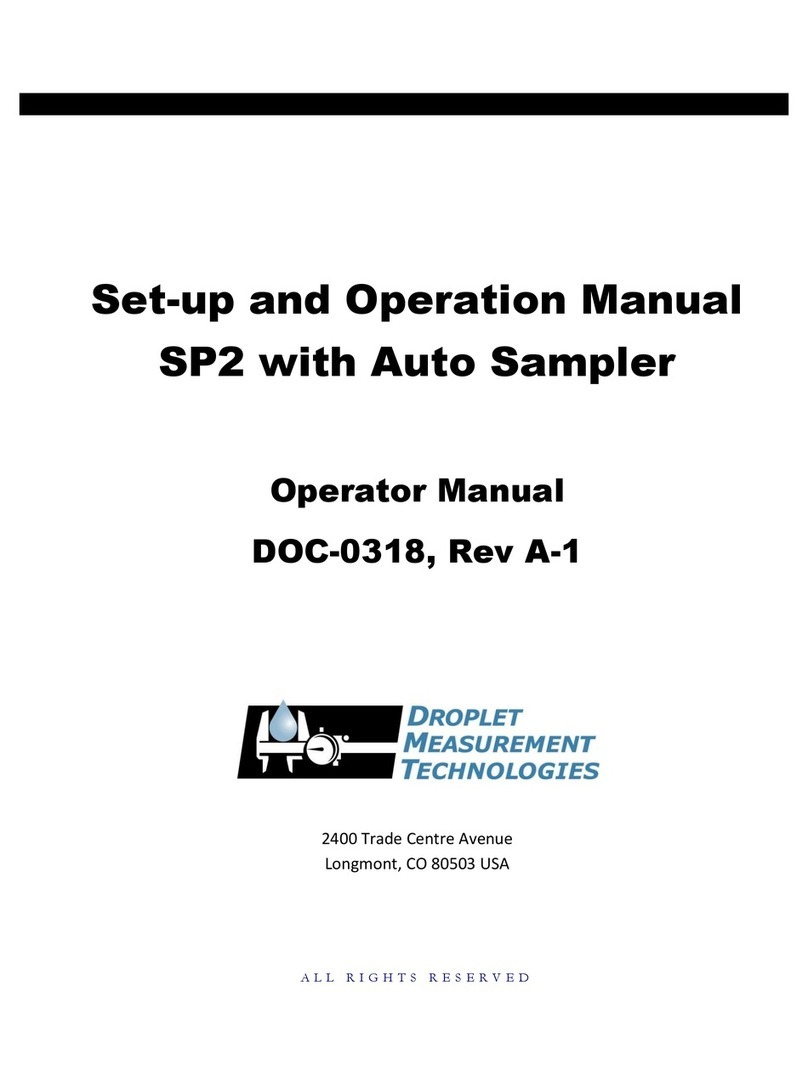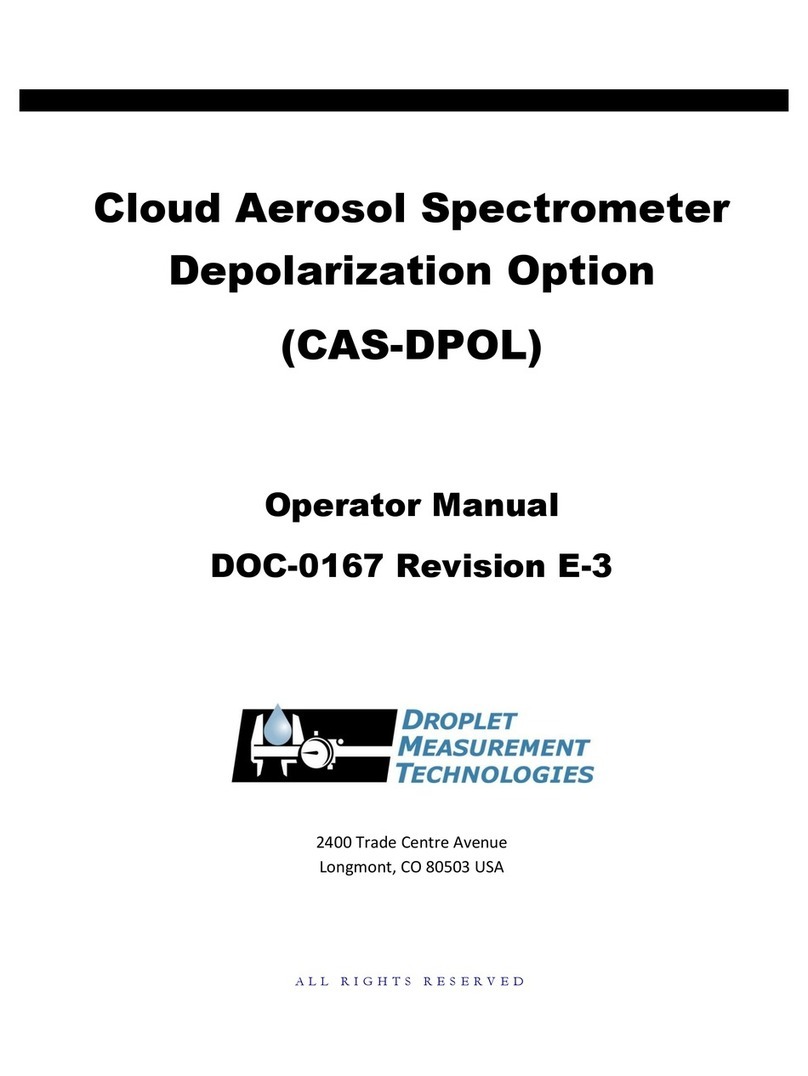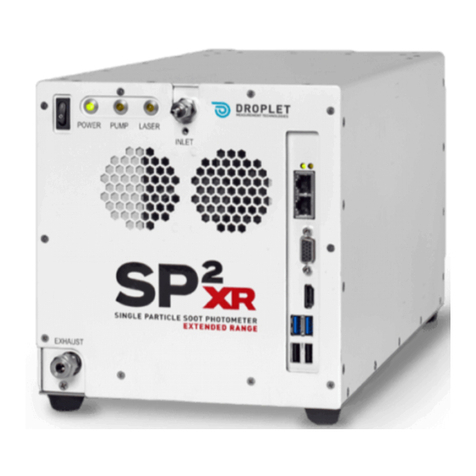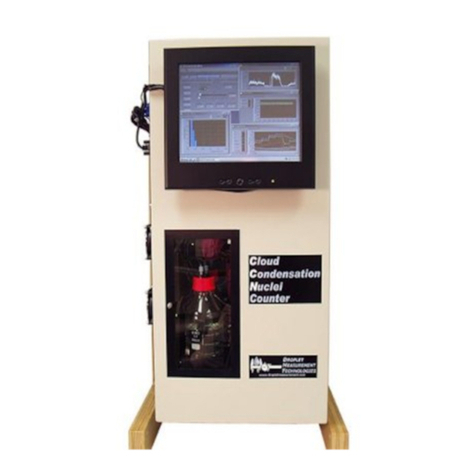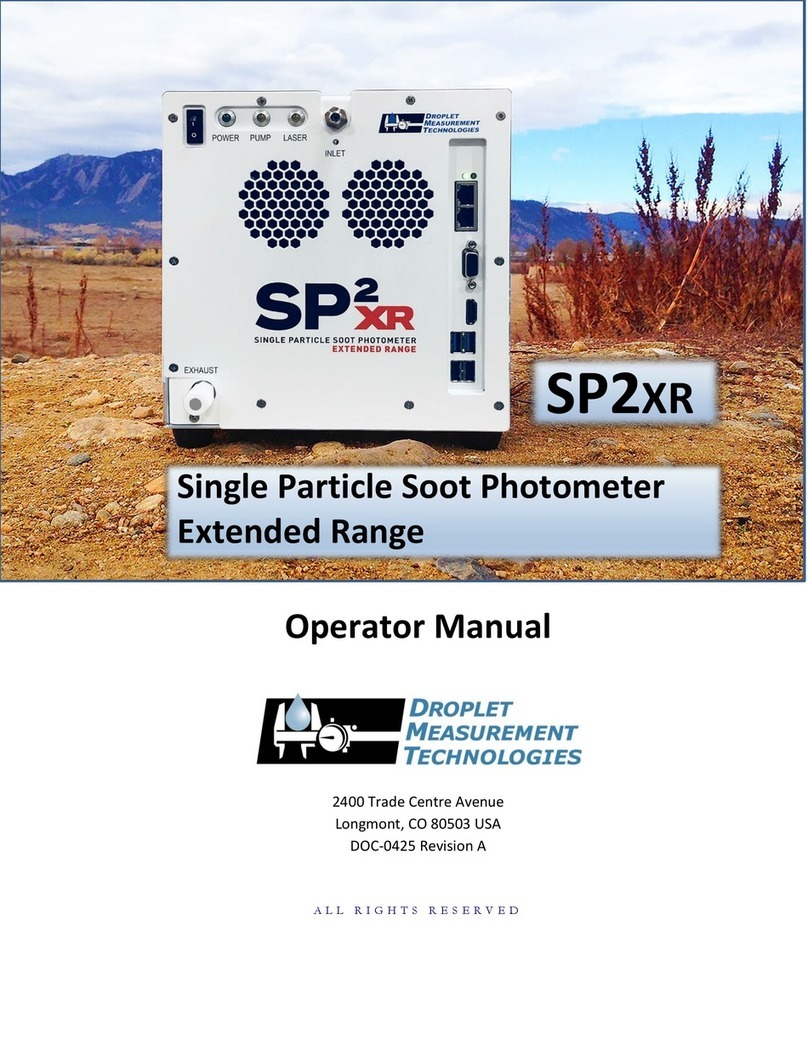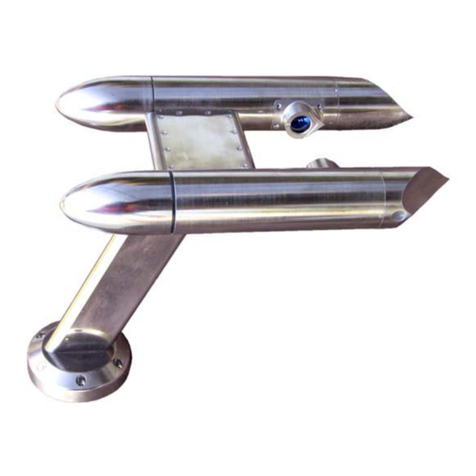
DOC-0171 Rev G-9 5
© 2017 DROPLET MEASUREMENT TECHNOLOGIES
CONTENTS
1.0 Introduction ...................................................................................................... 7
1.1 Specifications......................................................................................................................... 7
1.2 Electrical Specifications ......................................................................................................... 9
1.3 Physical Specifications........................................................................................................... 9
1.4 Operating Limits .................................................................................................................... 9
2.0 Theory of Operation ........................................................................................ 10
2.1 Laser Characteristics............................................................................................................ 12
2.2Optical Detectors.................................................................................................................13
2.3 Control Board Inputs ........................................................................................................... 14
3.0 Unpacking and Setup....................................................................................... 14
3.1 Unpacking............................................................................................................................ 14
3.2 Set Up ..................................................................................................................................14
3.3 Turning On the System ........................................................................................................16
3.4 Turning Off the System........................................................................................................ 22
4.0 Flow System .................................................................................................... 22
5.0 Typical Operating Parameters.......................................................................... 23
6.0 Laser Safety Interlocks..................................................................................... 23
7.0 Routine Maintenance ...................................................................................... 25
7.1 SP2-D: Procedure to Calibrate the Laminar Flow Element.................................................. 26
7.2 Procedure for Alignment of the YAG Laser ......................................................................... 26
7.3 Cleaning the Laser Optics ....................................................................................................26
8.0 Calibrating the Instrument with Aerosol Black Carbon ..................................... 27
8.1 Required Equipment............................................................................................................ 27
8.2 Calibration Procedure.......................................................................................................... 27
9.0Troubleshooting .............................................................................................. 28
Appendix A: Revisions to Manual.................................................................................. 29
Appendix B: SP2 YAG Pump Laser Storage and Handling Instructions............................. 30
Storing the SP2 YAG Pump Laser..................................................................................................... 30
Handling the SP2 YAG Laser ............................................................................................................31
Appendix C: Configuring and Testing the SP2’s Four Analog Input Channels .................. 32
Configuration................................................................................................................................... 32
Testing the Input Voltages...............................................................................................................34
Appendix D: Plumbing Diagram..................................................................................... 35
Appendix E: SP2-D System Schematic............................................................................ 35
